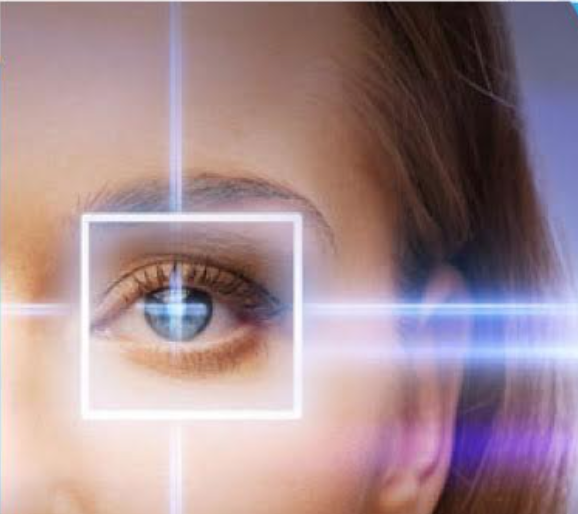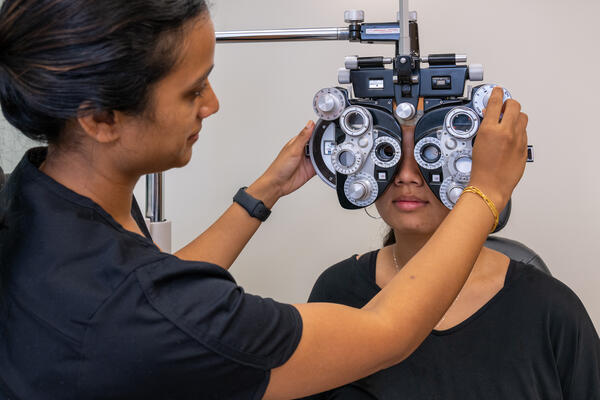Andalusia Eye Facility: Premier Services for Vision Adjustment
Wiki Article
The Full Breakdown of Retina Disorders and How They Affect Your Vision
Retina disorders can interrupt this delicate procedure, leading to a variety of vision problems. By checking out the anatomy of the retina, typical conditions that can impact it, their reasons, signs and symptoms, and available therapy options, we can gain important insights into maintaining and safeguarding our vision.Overview of Retina Composition
The detailed structure of the retina functions as the structure for visual perception and plays an important role in the procedure of transforming light into neural signals for the mind to analyze. Situated at the back of the eye, the retina is composed of a number of layers that interact perfectly to assist in vision. At the core of this complicated framework are photoreceptor cells referred to as cones and rods. Poles are accountable for vision in low light problems and finding motion, while cones are essential for shade vision and comprehensive aesthetic acuity. These photoreceptor cells transform light power into electrical signals that are after that processed by various other retinal cells, such as bipolar cells and ganglion cells. The bipolar cells send signals from the photoreceptors to the ganglion cells, which consequently send out these signals with the optic nerve to the mind for aesthetic handling. Understanding the elaborate anatomy of the retina is basic in comprehending how vision features and exactly how numerous retina problems can affect aesthetic assumption.
Common Retina Disorders
Retina problems incorporate a series of conditions that affect the intricate framework of the eye accountable for visual handling. One common condition is age-related macular deterioration (AMD), a leading reason for vision loss in individuals over 50. AMD impacts the macula, a part of the retina vital for sharp central vision, resulting in blurriness or unseen areas in the central aesthetic area.An additional common condition is diabetic retinopathy, taking place in people with diabetes. High blood sugar level levels harm the blood vessels in the retina, bring about vision impairment or loss of sight if left without treatment. Retinal detachment is a serious condition where the retina retreats from its normal position, triggering a sudden beginning of drifters, flashes of light, or loss of vision in a curtain-like pattern.
Lastly, retinitis pigmentosa is a group of hereditary disorders that trigger the breakdown and loss of cells in the retina, causing evening loss of sight and a gradual constricting of the visual field - andalusia pediatrics. Understanding these usual retina disorders is crucial in preserving vision and seeking timely medical intervention
Sources Of Retina Disorders
Numerous factors add to the growth of retina problems, including hereditary predispositions, lifestyle choices, and underlying health and wellness conditions. Hereditary proneness play a considerable duty in several retina disorders, such as retinitis pigmentosa and macular degeneration. Individuals with a family members history of these problems are at a higher threat of creating them because of inherited hereditary anomalies neurologist Andalusia affecting the retina's function.Way of living selections can likewise affect retina health and wellness. Smoking, for example, has actually been connected to an enhanced threat of age-related macular degeneration, a typical retina problem that can cause vision loss. Poor nutritional behaviors lacking important nutrients like vitamins A, C, and E, as well as omega-3 fats, can additionally add to the development of retina disorders.
Diabetic retinopathy, an issue of diabetic issues, can create damage to the blood vessels in the retina, leading to vision disability. High blood pressure can result in hypertensive retinopathy, where high blood stress influences the blood vessels in the retina, potentially triggering vision troubles.
Symptoms and Diagnosis
Provided the significant impact that causes such as hereditary tendencies, way of living choices, and underlying health and wellness problems can carry the development of retina conditions, it is vital to identify the signs and symptoms and make use of effective analysis methods for early detection and monitoring. Symptoms of retina conditions can differ depending upon the certain condition however might include obscured or distorted vision, the unexpected look of floaters or flashes of light, a dark spot in the center of your vision, or a gradual loss of main vision. It is vital to seek prompt clinical attention. if you experience any of these symptoms.
Detecting retina disorders commonly entails a detailed eye exam, which might include visual skill tests, dilated eye exams, optical comprehensibility tomography (OCT), fluorescein angiography, or various other imaging examinations. Your eye care company might additionally ask about your case history and any kind of family history of eye problems. Early detection via regular eye exams is essential to stopping vision loss and managing retina problems properly. Your medical care provider will work with you to create a customized treatment plan to preserve your vision. if diagnosed with a retina problem.

Therapy Alternatives and Management
Efficient management of retina problems includes a multifaceted strategy that includes customized therapy alternatives to address certain problems and maintain aesthetic function. Treatment choices for retina disorders vary relying on the underlying reason and severity of the problem. In instances of retinal detachment, surgical interventions such as vitrectomy or scleral buckling might be required to reattach the retina and stop vision loss. For problems like age-related macular degeneration (AMD), therapies like anti-VEGF injections or laser therapy can help slow down condition progression and preserve continuing to be vision.Regular eye exams and early discovery of retina problems are necessary for effective monitoring and therapy end results. Patients with retina conditions need to function very closely with their eye doctor to create a personalized treatment strategy that addresses their certain demands and aids preserve optimal aesthetic feature.
Final Thought
To conclude, comprehending the makeup of the retina, typical problems, triggers, signs, diagnosis, and treatment choices is essential in taking care of vision problems. Retina disorders can significantly impact vision and quality of life, making very early detection and proper monitoring important. By remaining notified regarding these conditions and looking for ideal healthcare, people can better preserve their vision and keep overall eye wellness.
Comprehending the intricate anatomy of the retina is fundamental in comprehending just how vision features and how different retina problems can influence visual understanding.
Retinal detachment is a major condition where the retina draws away from its normal position, causing an abrupt start of advances, flashes of light, or loss of vision in a curtain-like pattern.
Symptoms of retina disorders can vary depending on the details problem however might consist of blurred or misshaped vision, the unexpected appearance of drifters or flashes of light, a dark place in the center of your vision, or a gradual loss of main vision.In final thought, understanding the anatomy of the retina, common problems, triggers, signs and symptoms, diagnosis, and therapy choices is essential in taking care of vision impairments.
Report this wiki page